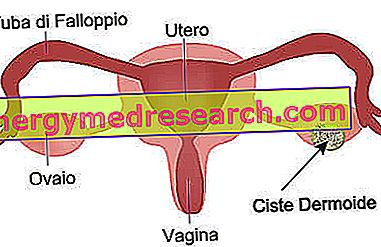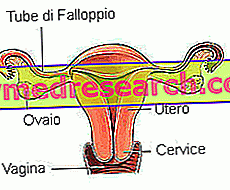Definition
A dermoid cyst is a benign tumor (teratoma) that is found predominantly at the ovarian level.
This cystic neoformation of embryonic derivation originates from germ cells, which maintain the ability to grow and differentiate into different types of tissues. The causes of dermoid cysts are still not entirely clear.
These formations can also arise in other districts, such as kidney, testicle and nervous system. Normally, dermoid cysts do not cause disorders, except in the case where these compress the surrounding organs.
In most cases, dermoid cysts affect only one ovary, but can also be bilateral and multiple.

Most common symptoms and signs *
- Changes in the menstrual cycle
- Abdominal pain
- Ovarian pain
- Pelvic pain
- pollakiuria
Further indications
This neoformation has a rounded shape, a soft consistency and a variable size ranging from a few millimeters to several centimeters. The dermoid cyst is covered by skin and, inside it, the presence of various tissues and organs can be observed macroscopically; in particular, the mass can contain fragments of hair, bones, cartilage, fat, skin, teeth, hair, sebaceous and sweat glands and eye or brain drafts.
Like most ovarian cysts, these formations are often asymptomatic. In some cases, however, dermoid cysts can cause pelvic pain, menstrual irregularities, blood loss and dyspareunia. Occasionally, intense abdominal pain may occur in the presence of an adnexal torsion of a mass greater than 4 cm in diameter.
Often, dermoid cysts are accidental, but suspicion arises in the presence of symptoms. In any case, it is always necessary to exclude an ectopic pregnancy.
Usually, transvaginal ultrasound confirms the presence of cystic formation, while MRI and computed tomography may be useful for diagnostic completion.
The benign cystic teratoma presents a slow growth and rarely undergoes a malignant transformation. In any case, regardless of nature, surgical removal of the cyst is always indicated.



